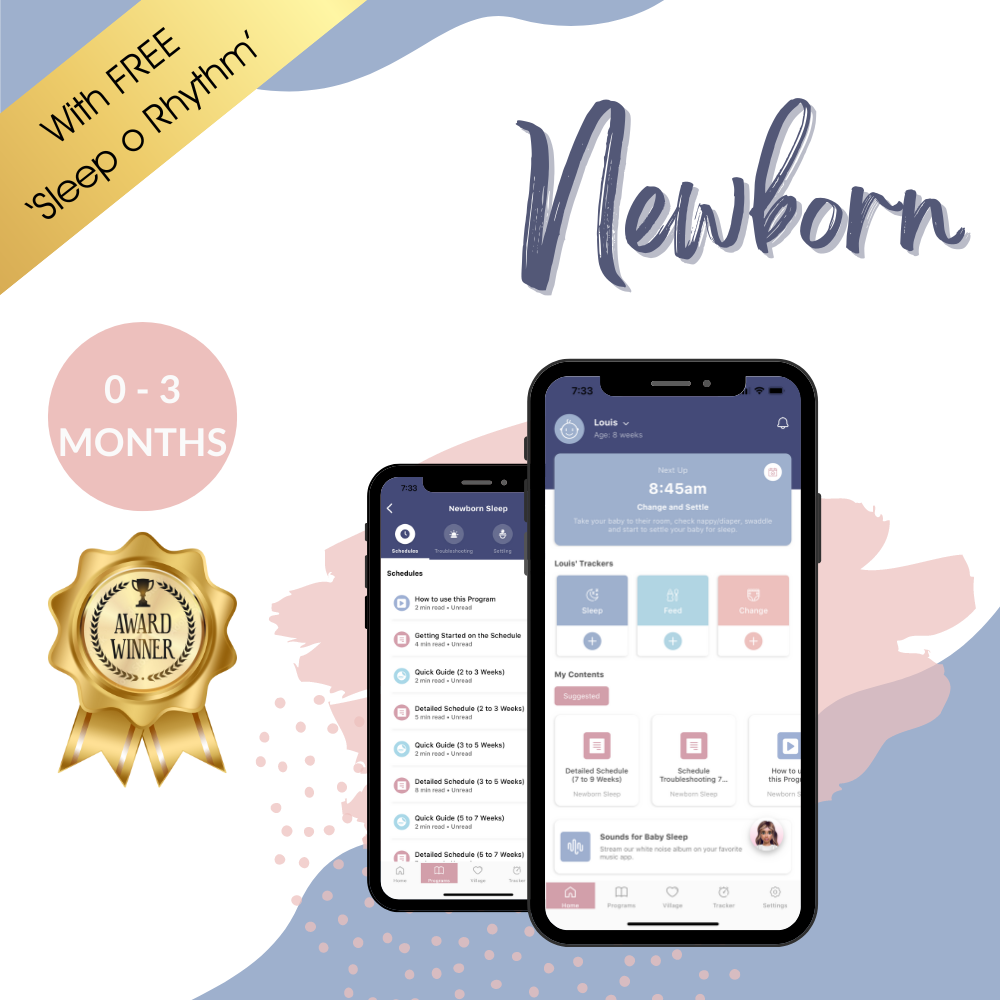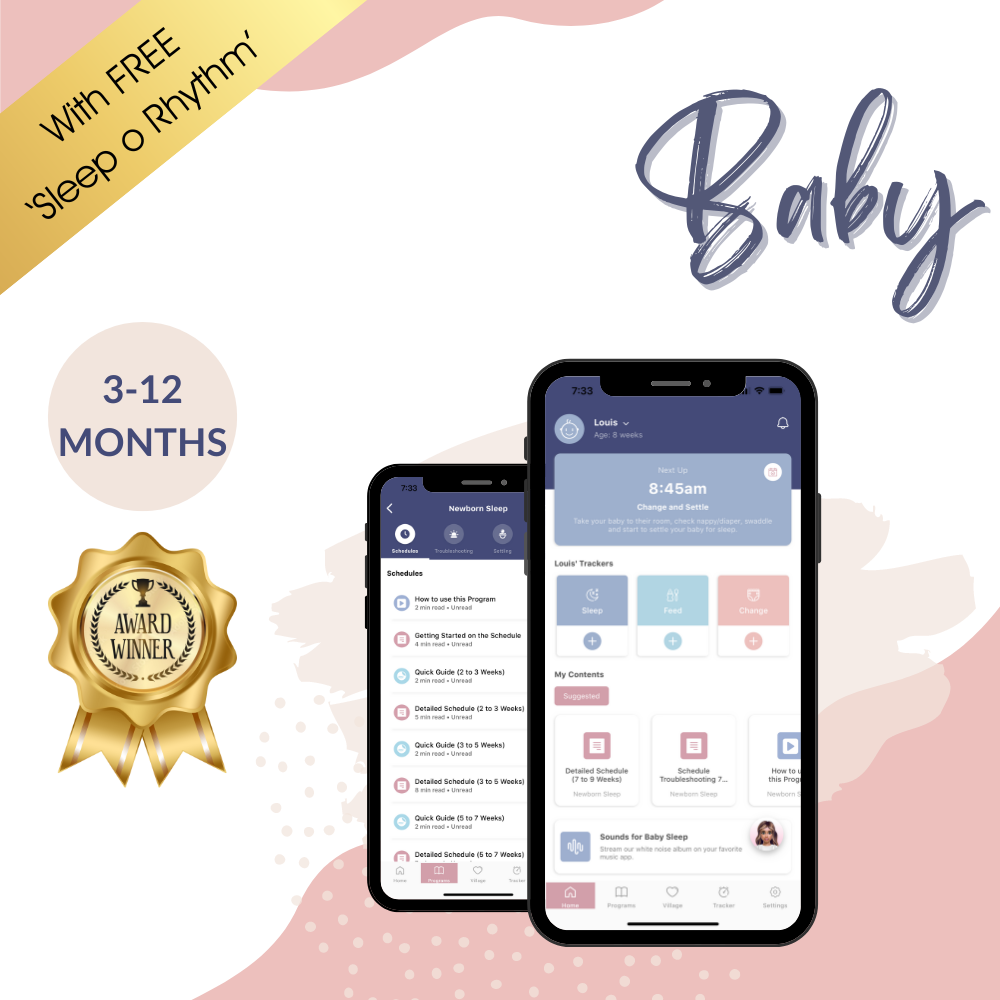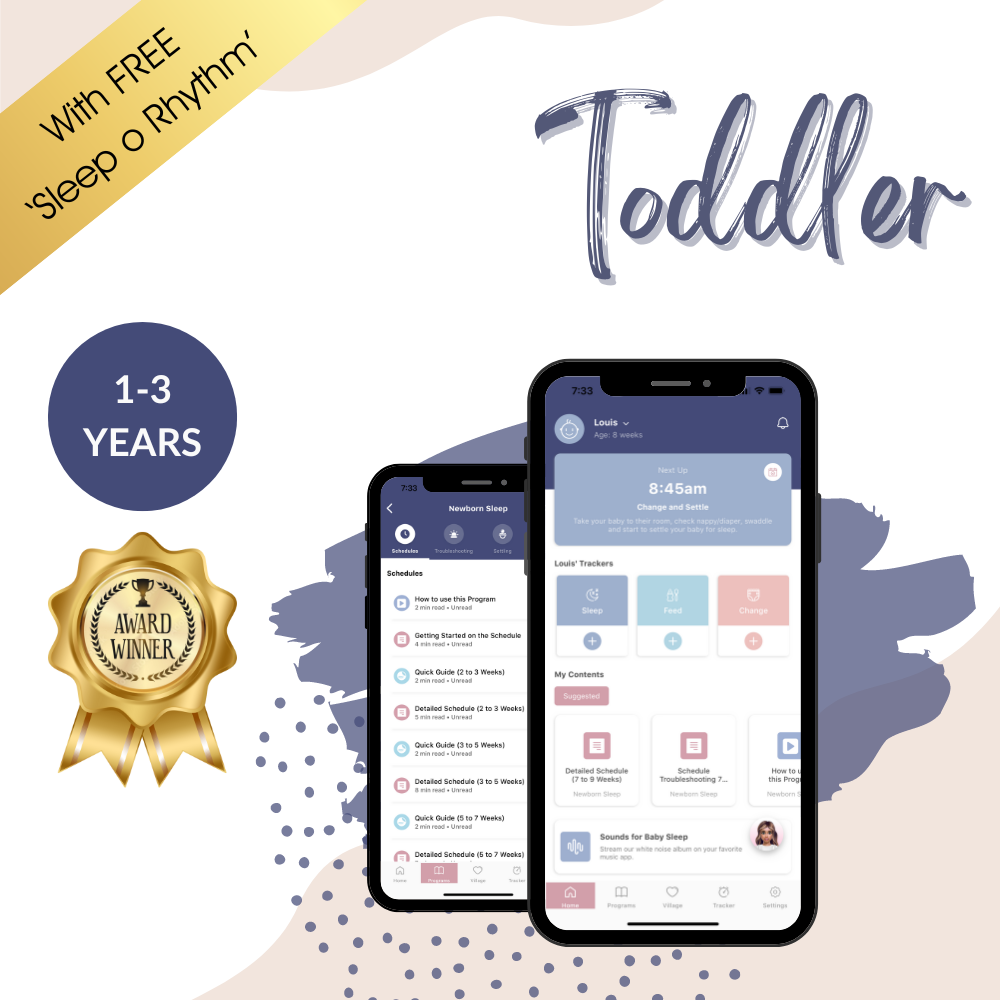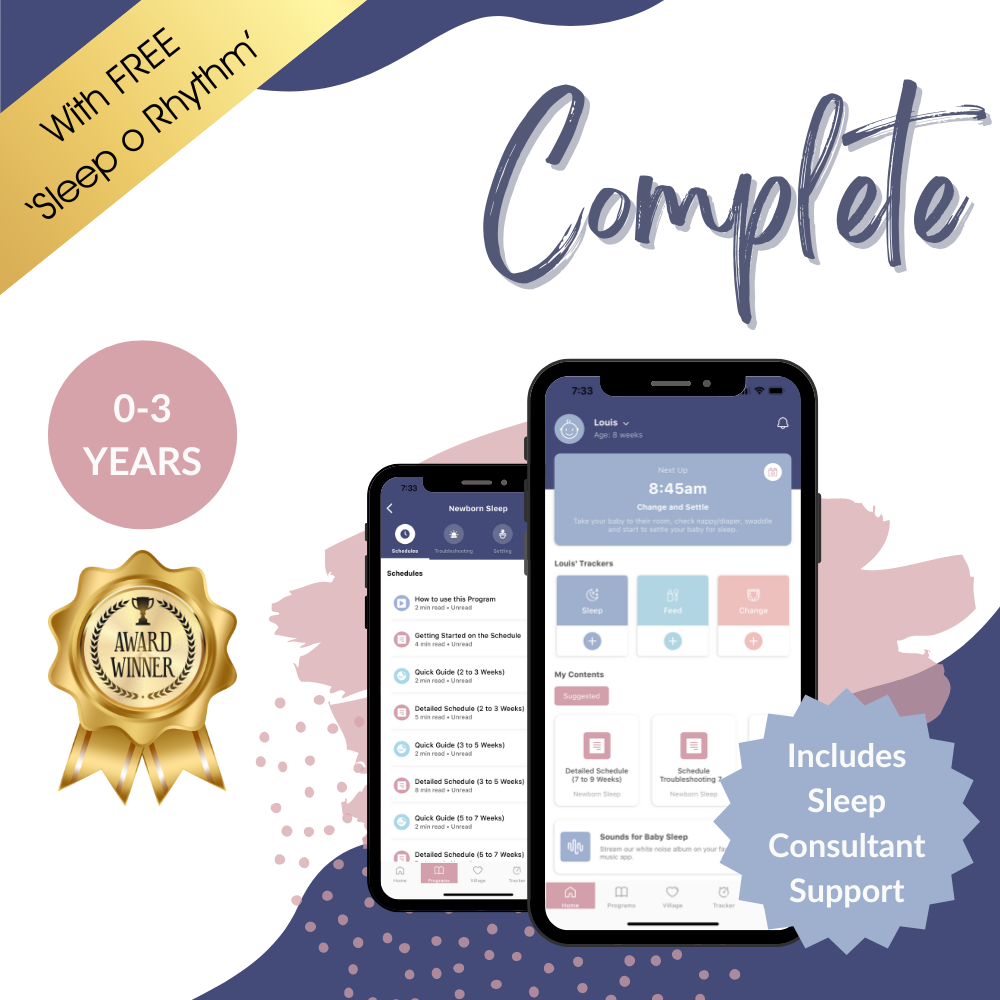
What Is a Dream Feed and How Does It Help Baby Sleep?
We all want our little ones to sleep through the night but the reality is that a baby's ability to do this depends on so many factors - from their sleep environment to their awake time during the day and for older babies, the ability to self-settle too. Throw hunger into the mix as well and it means you could be in for a long night!
However, that doesn’t necessarily have to be the case. If your baby is waking multiple times a night for a feed, there is a method that you can try to reduce those wakes and get a longer stretch of sleep happening for both of you.
Say hello to the dream feed!
You may have heard of the term dream feed bandied about when it comes to your baby's nighttime feeds, but what is it and how do you know when to do a dream feed? Read on to find out!
What is dream feeding?
A dream feed is a late-night feeding technique where you give your baby before you go to bed. It is usually around 3-4 hours after your little one has gone down for the night, so if your baby has gone to bed at 7pm (like suggested in our Program) then you’ll give the dream feed between 10-11pm. The dream feed is initiated by you by gently rousing your wee one from sleep, instead of your baby naturally waking for a feed.
What is the purpose of dream feeding?
The purpose of dream feeding is to help you and your baby sleep for a longer stretch overnight by making sure they are nice and full before you go to bed. As an example, if your baby normally wakes for a feed around midnight, doing a dream feed between 10-11pm can help to push that feed out to 2-3am or even later. From 3 months onwards, you might even find that your baby is able to sleep right through until morning after the dream feed!
Get your little one’s sleep back on track.
Get guidance, advice & exclusive support through the sleep regressions, nap transitions and big sleep changes to come.
Get our Sleep Programs
How do I do a dream feed?
If you want to try dream feeding with your baby, here are some easy steps to try:
- Try and do the dream feed before you go to sleep, so you’ve got another feed in during your awake time. When I did this with my children, I always aimed for around 10-11 pm. If you go to bed earlier, you could ask your partner to do this feed for you if your baby is bottle fed. The late dreamfeed can be a really great time to introduce a bottle and give yourself a rest if you need it.
- Get your baby out of bed and change nappy/diaper first if needed. You can either keep them in their swaddle or sleeping bag during the feed or you can dress them for bed again at the end of the feed.
- Feed them quietly and avoid stimulating or talking to them. You want to try to keep them as sleepy as possible. If your baby isn’t feeding well though, you may need to wake them fully for this feed.
- Try and keep the room nice and dark when giving this feed and if you are using white noise, keep it playing throughout the feed.
- Give your baby a full feed from the breast or bottle. Some babies will initiate the feed as soon as they sense the breast or bottle near their mouth, others may need a bit more encouragement. You can try gently stroking their cheek or rubbing the nipple/bottle teat over their bottom lip to encourage them to latch, or gently open their mouth and insert the breast/bottle - they will do the rest!
- Make sure they are really well-winded after the feed.
- Place baby back down in their crib on their back for safe sleeping.
What does this look like?
Since the dreamfeed will happen after your baby’s normal bedtime, it shouldn’t have any impact on your normal bedtime routine. For babies between 0-6 months, we recommend the following:
5pm
Dinner milk feed
6pm
Bath
6:15-6:30pm
Bedtime milk feed
6:45pm
Wind down and start settling
7pm
Bedtime
10-11pm
Dreamfeed
When to start & finish dream feeding
Dream feeding works best for babies between 0-6 months old and can be introduced at any time during that age bracket.
We recommend dropping the dream feed around 6 months because at that age, it can start to negatively affect your baby’s nighttime waking and in some cases, can become a habit wake. This is where they can start to wake between 10-11pm, expecting a feed, even though they aren’t genuinely hungry at that time.
You may also need to stop dream feeding if your baby is losing interest in their morning milk feed - this is a sign that they no longer need as much milk overnight.
If you feel it is time to drop the dreamfeed, we recommend gradually reducing the feed by 1oz (bottle feeding) or 2 mins (breastfeeding) every few nights until it is gone.
How do I know when to do a dream feed?
The first thing you’ll want to do is look at when your baby is having their first feed of the night after bedtime.
Say goodbye to sleepless nights.
Join over 800,000 families worldwide who are enjoying excellent sleep with our Sleep Programs, created by experts in the field of pediatric sleep.
Get our Sleep Programs
With my own children, their bedtime would always be at 7pm and then their first feed when they were really little newborns was usually around 9.30-10.30pm. Very young babies will often wake for this feed naturally, so that’s classed as a “normal” feed rather than a dream feed. If your baby is waking naturally for a feed before 11pm, we wouldn’t advise introducing a dream feed at this stage.
As your newborn gets older though, they will likely stop waking for that feed before you go to bed. Instead, their first feed may not be until around midnight or 1am and then they will likely have a second feed after that as well - usually around 4/5am when it can be tricky to resettle them back to sleep afterwards.
This is where dream feeding can help! By proactively feeding them around 10-11 pm before you go to bed, it can help to push that “first” feed later to around 3/4 am, which should then be enough to get them through until 7 am. So you’re only waking to do one feed overnight rather than two - winning!
For some older babies between 3-6 months, dream feeding between 10-11pm can be enough to see them through until morning without requiring another feed.
How do I know if dream feeding isn’t working?
Dream feeding can work for you and your baby, but unfortunately it doesn’t work for every baby.
In some cases, dream feeds can have the opposite effect, causing your baby to wake more frequently overnight than what they had previously been doing - sometimes as frequently as every 2 hours. Or, your baby might continue to wake at the same times for feeds overnight, regardless of whether you do the dream feed or not.
This means the dream feed is not working how it should. In this case, the best thing to do is let your baby wake naturally for their feeds overnight. Be sure to try the dream feed for a good week before deciding if it is working or not though. It’s important to give your baby time to adjust, as it’s not always an overnight fix.
Other instances where the dream feed might not work for your baby would be if you were really struggling to wake your baby enough for them to feed well. Or if your baby struggles with wind or reflux, a dream feed can sometimes exacerbate those issues. In both of these cases we would recommend dropping the dreamfeed and letting your baby wake naturally for feeds instead.
Pros and cons of dream feeding
Pros:
- Can help both you and your baby sleep for a longer period overnight. In some cases, babies may sleep through the night after the dream feed.
- A good opportunity to introduce a bottle and have your partner help out with feeding if you choose
Cons:
- Doesn’t work for all babies and in some cases can cause them to wake more
- If you don’t have a partner who is able to do the feed, it will require going to bed later around 10-11pm
- For babies who struggle with wind or reflux, feeding while they are sleepy or drowsy can exacerbate their symptoms
Is dream feeding safe?
If your baby is gaining weight well and has no underlying feeding or medical issues then it is safe to do the dream feed and aim for that longer stretch of sleep overnight. Dream feeding doesn’t interfere with a baby’s need to be fed overnight, it simply tweaks the timing of those feeds to allow both you and your baby to sleep for longer.
For bottle fed babies though, it is important to do the dream feed like you would a normal feed - so pick them up and feed them in your arms rather than feeding them the bottle while they are lying flat in their bed.
If you have concerns about your baby’s weight gain or feeding, or if they have an underlying issue like reflux, we would recommend discussing the dream feed with your doctor first.
Conclusion
The dream feed can be an effective way to help babies between 0-6 months old sleep for a longer stretch overnight but unfortunately it doesn’t work for all babies. If you choose to give dream feeding a try, stick with it for a week to give your baby a chance to adjust and then see whether or not it’s working for them.
If it does work for your little one, you can continue dream feeding until 6 months and then gradually reduce the feed before dropping it altogether. This will help to prevent a habit wake forming at that time. If dream feeding doesn’t work for your little one, then continue to let them wake naturally for feeds overnight instead.
Let's get your little one's sleep sorted ASAP!Our award-winning Sleep Programs will solve your baby's sleep challenges in no time.
Get our Sleep Programs
There are many different reasons why a baby will wake overnight so if you are finding that your baby is waking quite frequently, with or without the dreamfeed, it’s worth considering other factors that could be contributing to that such as under or overtiredness, the sleep environment or a settling issue - just to name a few!
To take the guesswork out of your baby’s sleep and make sure everything is lined up to give them the best chance at sleeping well overnight, download our Little Ones App, where you'll find age-specific programs. You'll also find our certified sleep consultants in the Little Ones Village are available to help you to determine whether dream feeding might benefit you and your baby.
Bibliography:
https://parentingscience.com/dream-feeding/
https://www.healthline.com/health/baby/dream-feed#common-problems

Receive product and services updates, promotional offers and other marketing communications based.





